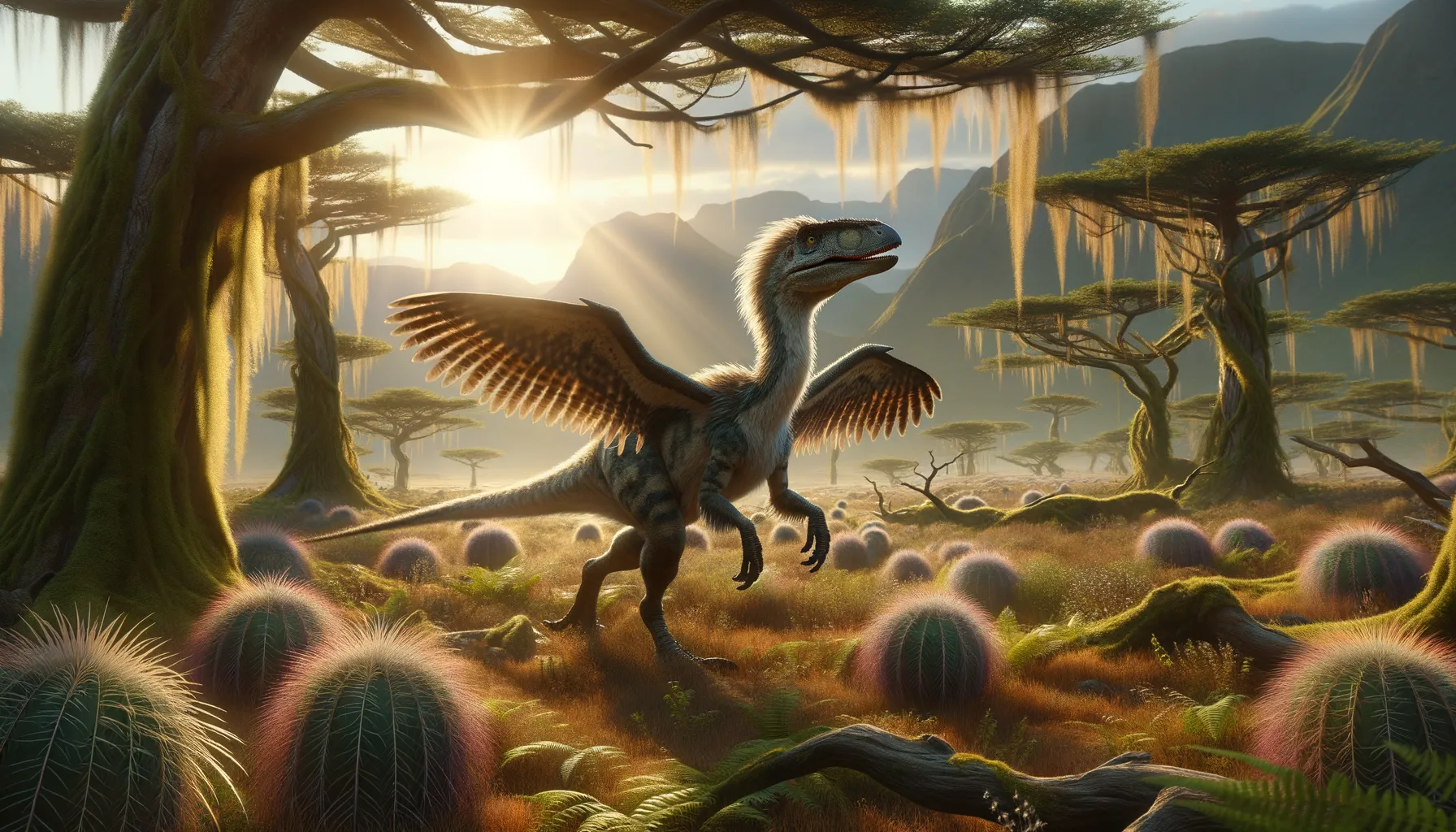
Shenzhouraptor
Feathered flyer of the ancient skies!
Period
Cretaceous
Length
Measured about 1.2 meters long.
Height
Stood about 0.5 meters tall.
Weight
Roughly weighed about 1 kilogram.
Shenzhouraptor was a bird-like dinosaur that lived during the Early Cretaceous period. It exhibits features that make it a transitional form between non-avian dinosaurs and birds. It had feathered wings, suggesting an ability to glide or possibly fly over short distances. Its discovery in China adds to our understanding of the diversity and evolution of early birds from theropod dinosaurs.
Diet
Shenzhouraptor was likely an omnivore. Its diet consisted of small animals like insects and possibly fruits or plant material available in its environment.
Hunting
Shenzhouraptor likely foraged for food, using its speed to catch small prey. Its hunting technique might have involved quick dashes to surprise its prey, relying more on agility than outright strength.
Environmental challenges
Shenzhouraptor faced challenges of finding food sources, especially during periods of environmental change. Predators posed a constant threat, requiring it to use its agility to escape. Climate variations during the period also influenced its survival, affecting the availability of food and shelter.
Speed
It was relatively fast for its size, using its wings for added speed.
Lifespan
Estimated to live around 10 to 20 years.
First discovery
Discovered in Liaoning, China in 2002.
Fun Facts
- Shenzhouraptor was a feathered dinosaur that lived around 125 million years ago during the Early Cretaceous period.
- It was discovered in China and its name means 'Shenzhou thief', referring to an ancient name for China.
- This dinosaur is believed to have been capable of flight or at least gliding, thanks to its long feathers on both its arms and tail.
- Unlike many other early bird-like dinosaurs, Shenzhouraptor had teeth, which suggests it might have had a varied diet.
- Fossils of Shenzhouraptor have been incredibly well-preserved, allowing scientists to study its features in great detail.
- Although it had some bird-like traits, Shenzhouraptor still had claws on its wings, which is a characteristic more common in dinosaurs.
- It plays an important role in understanding the evolution of birds from their dinosaur ancestors.
Growth and Development
Young Shenzhouraptors would have grown rapidly to reach maturity, developing their flight capabilities early. As they matured, their plumage and skeletal structure further evolved to suit their ecological niche. The development of flight-related features would have been crucial for survival and finding food.
Habitat
Shenzhouraptor lived in forested environments with plenty of foliage. Its habitat provided both food resources and protection from predators in the dense underbrush. The varied terrain likely included a mix of trees, shrubs, and open glades which facilitated both hiding and foraging.
Interaction with other species
Shenzhouraptor may have coexisted with other small theropods and early birds, competing for food resources. It had to be vigilant of larger predators and possibly collaborated or engaged in competition with species within its ecological community. Its presence could have influenced the distribution and behavior of prey species.
Natural lifespan
Shenzhouraptor could live naturally up to two decades under optimal conditions.
Reproduction
Shenzhouraptor likely laid eggs like other theropods. Nesting behavior might have been similar to modern birds, providing care and protection until the young were capable of foraging. Trait inheritance would have included strategies for ensuring offspring survival in a competitive environment.
Social behaviour
Shenzhouraptors may have lived in small family groups or solitary units. Social interactions could include vocalizations or displays, similar to birds, for communication. Their behavior was likely influenced by their ecological surroundings and needs for food and reproduction.
Fossil locations
Fossils of Shenzhouraptor have been primarily found in Liaoning Province, China. This region is known for its rich fossil beds that have provided a wealth of information on early feathered dinosaurs. The area continues to be a significant site for paleontological discoveries, revealing the complexity of early dinosaur-bird evolution.
